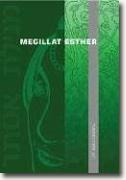Megillat Esther
J.T. Waldman
book reviews:
· general fiction
· chick lit/romance
· sci-fi/fantasy
· graphic novels
· nonfiction
· audio books
· author interviews
· children's books @
curledupkids.com
· DVD reviews @
curledupdvd.com
newsletter
win books
buy online
links
home
for authors
& publishers
for reviewers

 |
Megillat Esther J.T. Waldman Jewish Publication Society of America Paperback 200pages January 2006 |
|
Impressive is a vast understatement for J.T. Waldman’s undertaking in Megillat Esther, the Hebrew narrative of Queen Esther in ancient times. While other biblical comics will simply retell the tale through text boxes and panels, Waldman makes readers work extensively through this graphic novel so that by the end, one has witnessed a story and a culture.
Waldman’s depiction of people contains both elements of caricatures and realism. The attention to detail on Waldman’s part should be duly noted. Without a doubt, he grapples over each and over panel, making many of them rich with background detail. He occasionally strays from the story of Esther, identifying these side roads as “Interludes,” asides that provide further context for the story. Some of the artwork in these sections also fluctuates from the standard he holds in the straight narrative, but in doing so, he emphasizes the striking difference of his interludes and Esther’s story. The most striking aspect of this graphic novel is that, as readers reach the halfway mark through the narrative, they are instructed to turn the book upside down and read panels from right to left. Readers of manga are familiar with this style, as Japanese comics are meant to be read from right to left, but so is Hebrew. In order to emphasize the cultural and religious background of this piece, Waldman allows half to be read as readers are used to then demands they adjust to Hebrew traditions if they are going to continue on with the tale. Of course, readers who have made it halfway are going to want to finish this compelling story. At story’s end there is still more to be gotten from Megillat Esther. Waldman includes a page about understanding the Hebrew Bible and as well as Rabbinic citations and footnotes for points of discussion or asides that didn’t fit naturally in the text. When authors set out to create such a work, they have obviously researched a significant amount of their material. Waldman makes sure to include a detailed bibliography, identifying the many sources used in helping to create this amazing piece. Megillat Esther exemplifies the potential of graphic novels by revealing how art and literature can blend together into a nominal piece of work. A lot of work was put into this graphic novel, but one can also see that Waldman injected much love into this piece. Readers will be in awe of the work presented in this graphic novel. Originally published on Curled Up With A Good Book at www.curledup.com. © Lance Eaton, 2006 |
|
|
|
 Click here to learn more about this month's sponsor! |
|
| fiction · sf/f · comic books · nonfiction · audio newsletter · free book contest · buy books online review index · links · · authors & publishers reviewers |
|
| site by ELBO Computing Resources, Inc. | |
 Though all text in the graphic novel is English, artistically placed throughout the panels is the accompanying Hebrew biblical text. Along the sides of each page are the corresponding verses to the Book of Esther. The Hebrew text also provides interesting flow from one panel to the next, serving as borders and outlines. The panels themselves seem to merge or blend together in a way that creates movement and energy often unseen in graphic novels. But the bold black ink of the Hebrew just creates such a presence in the story that it turns from words into art.
Though all text in the graphic novel is English, artistically placed throughout the panels is the accompanying Hebrew biblical text. Along the sides of each page are the corresponding verses to the Book of Esther. The Hebrew text also provides interesting flow from one panel to the next, serving as borders and outlines. The panels themselves seem to merge or blend together in a way that creates movement and energy often unseen in graphic novels. But the bold black ink of the Hebrew just creates such a presence in the story that it turns from words into art.